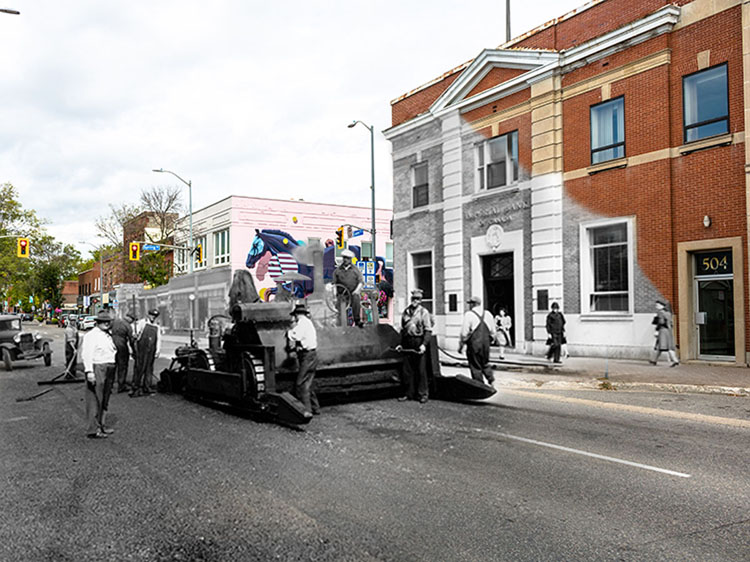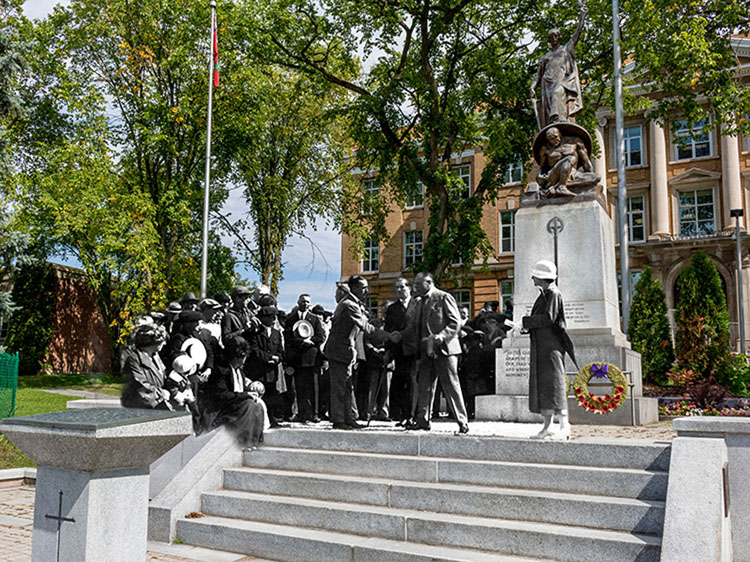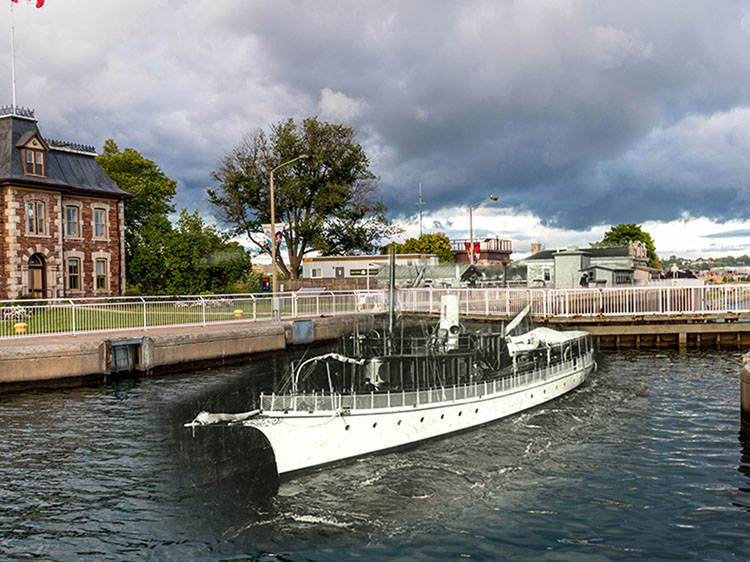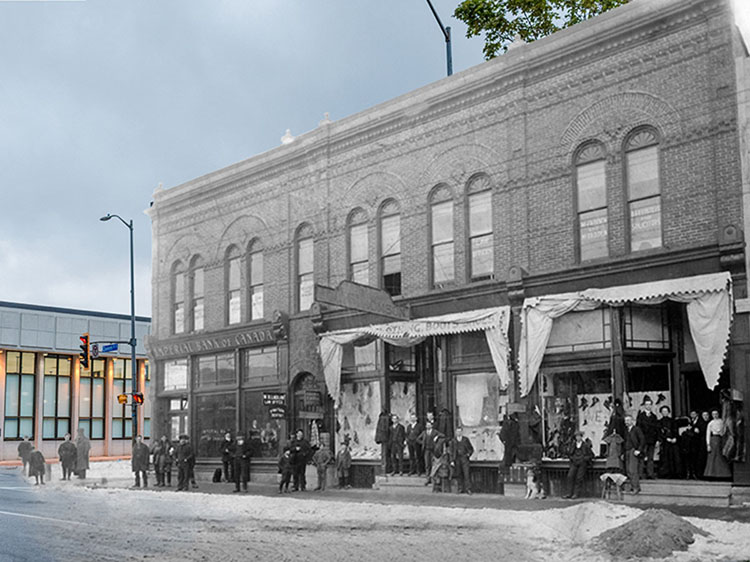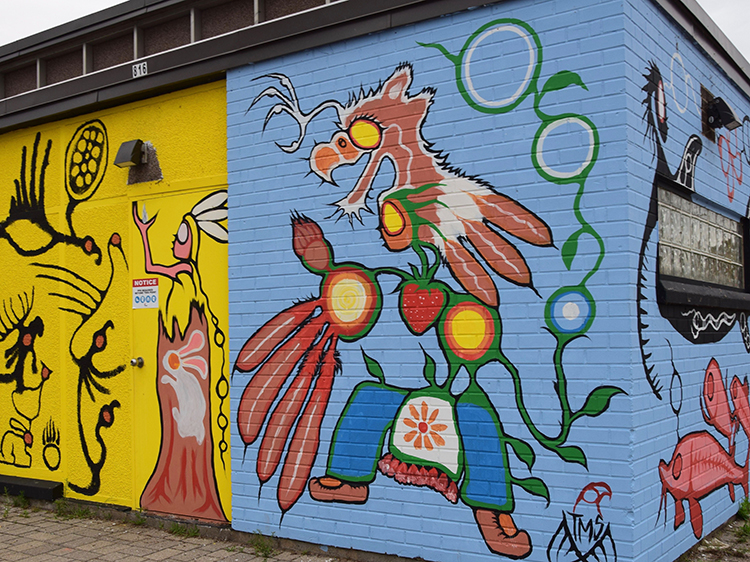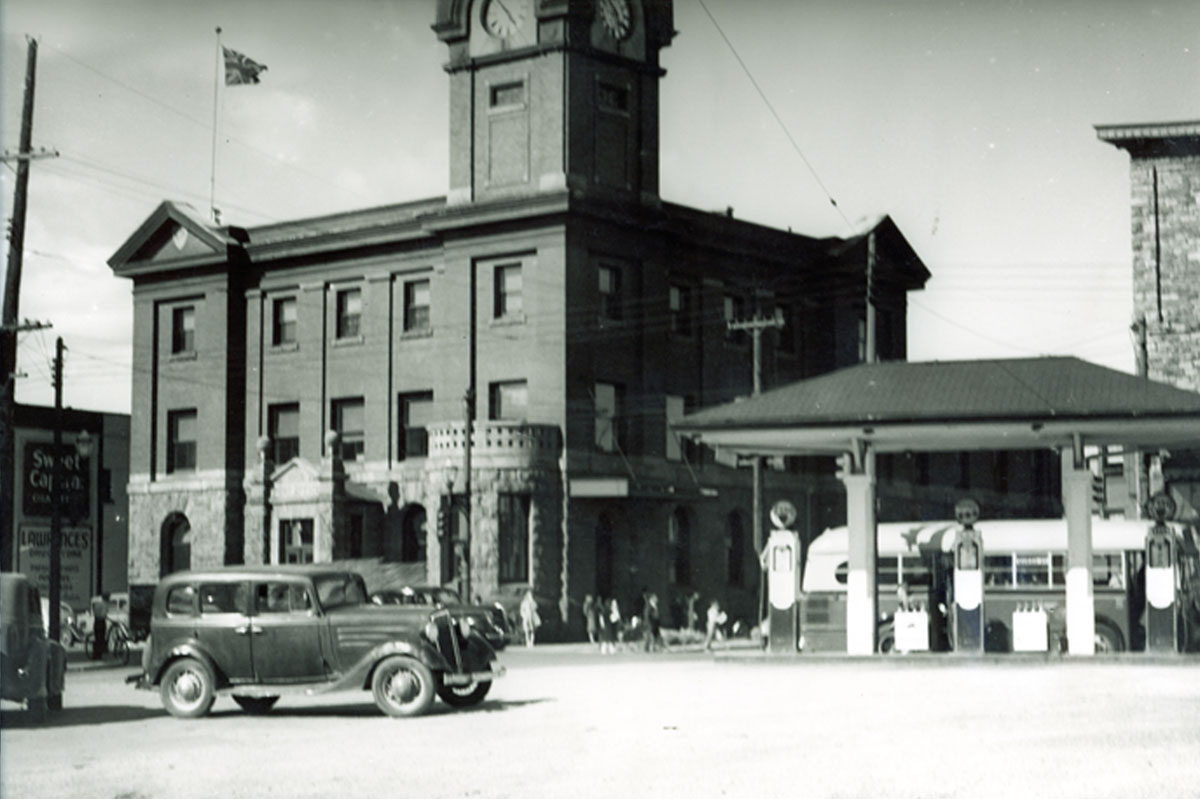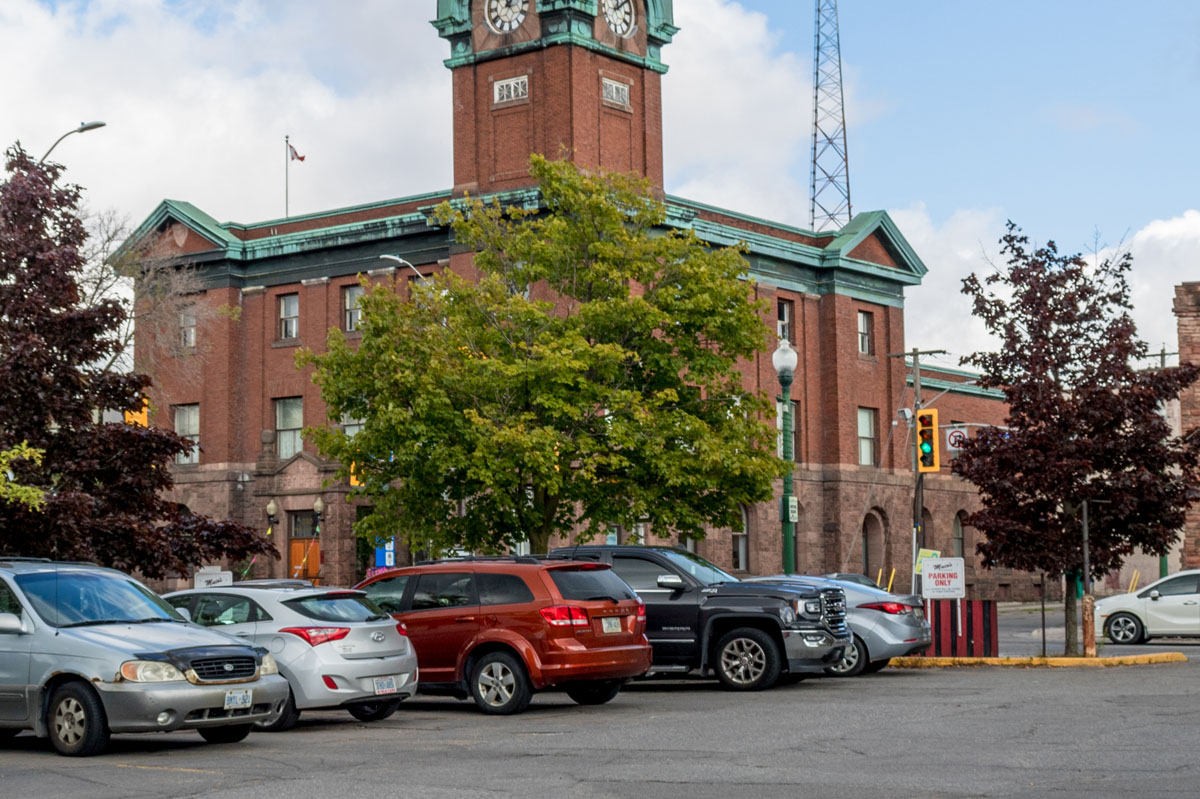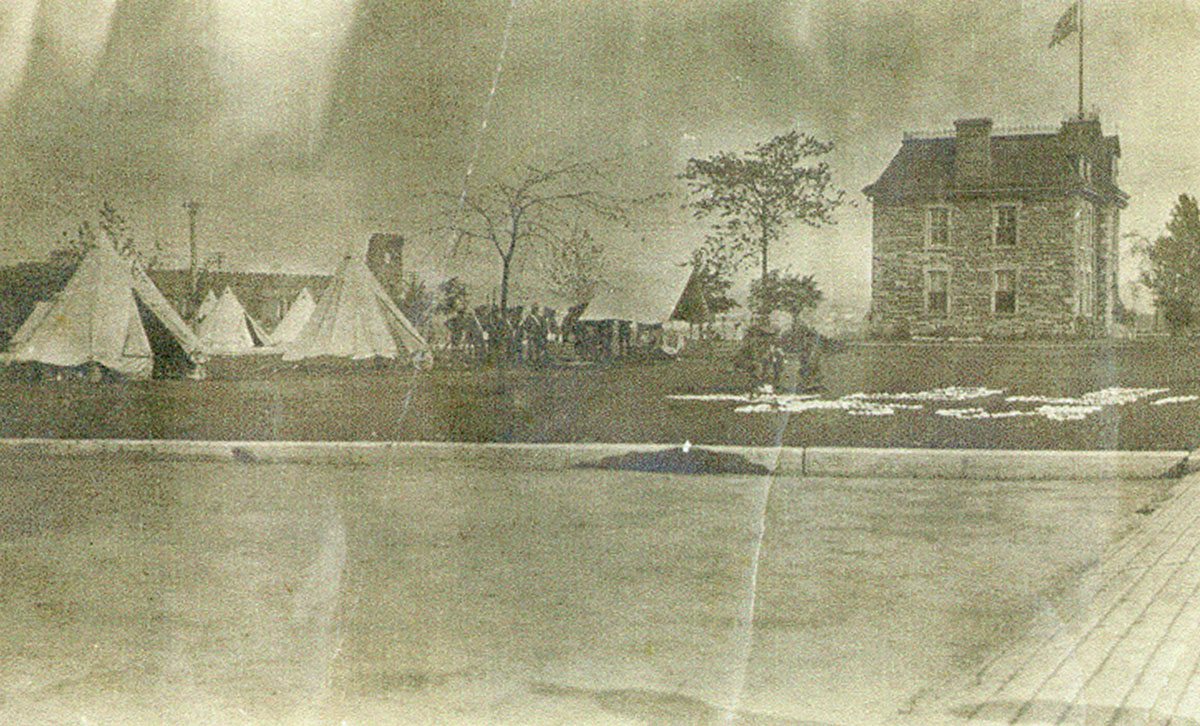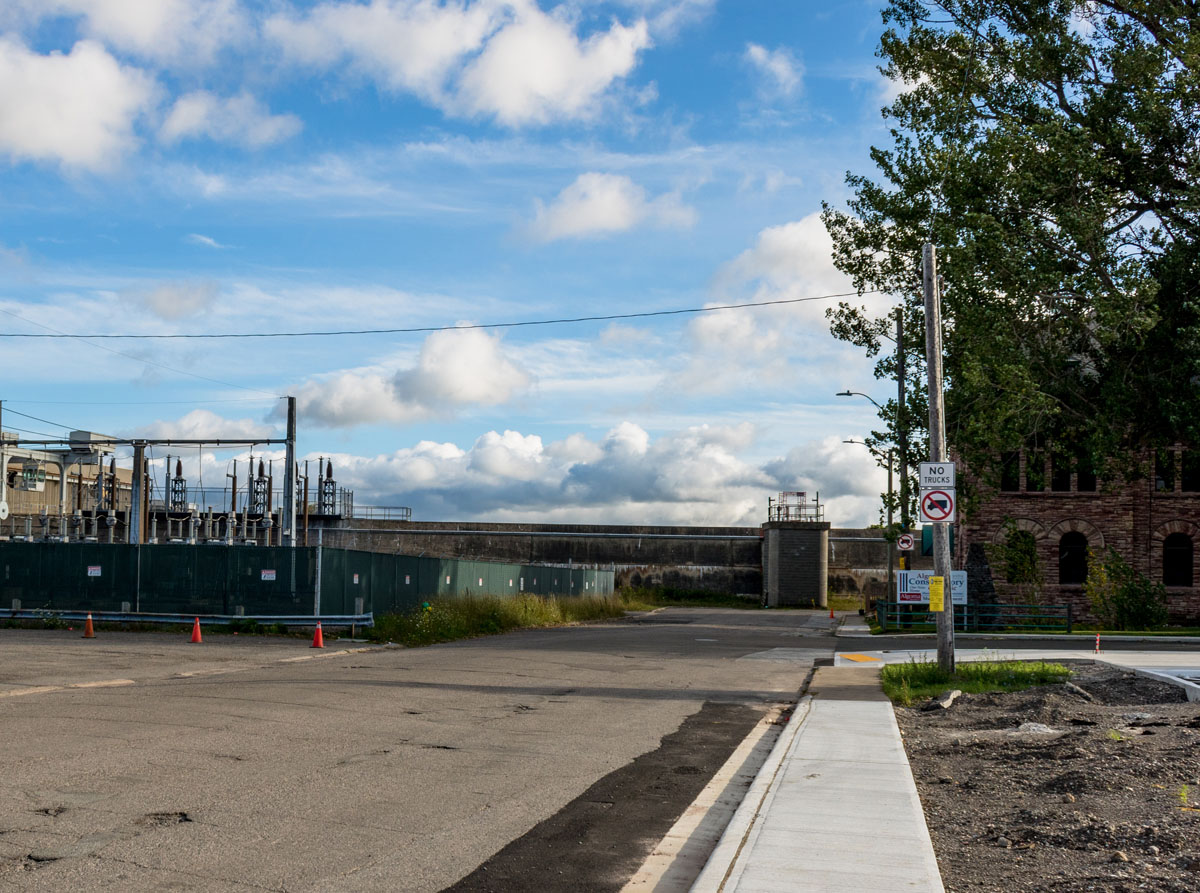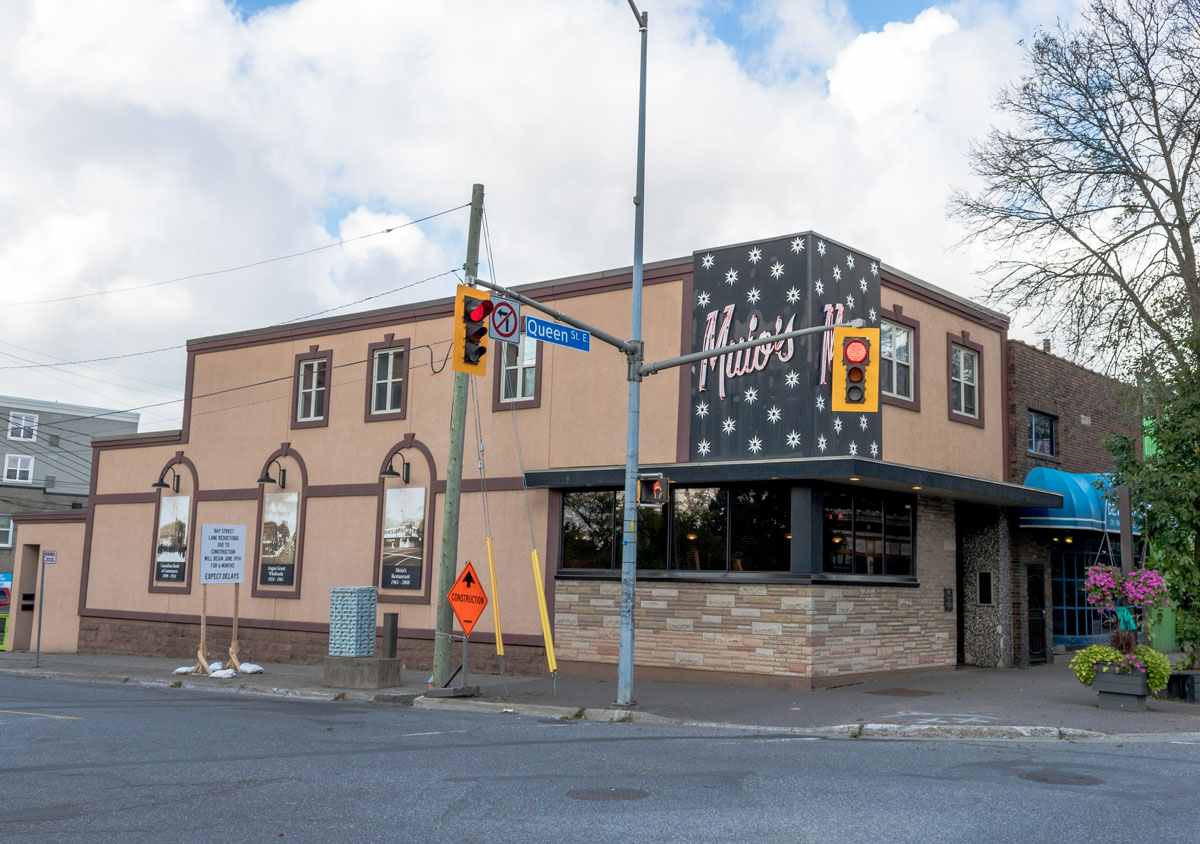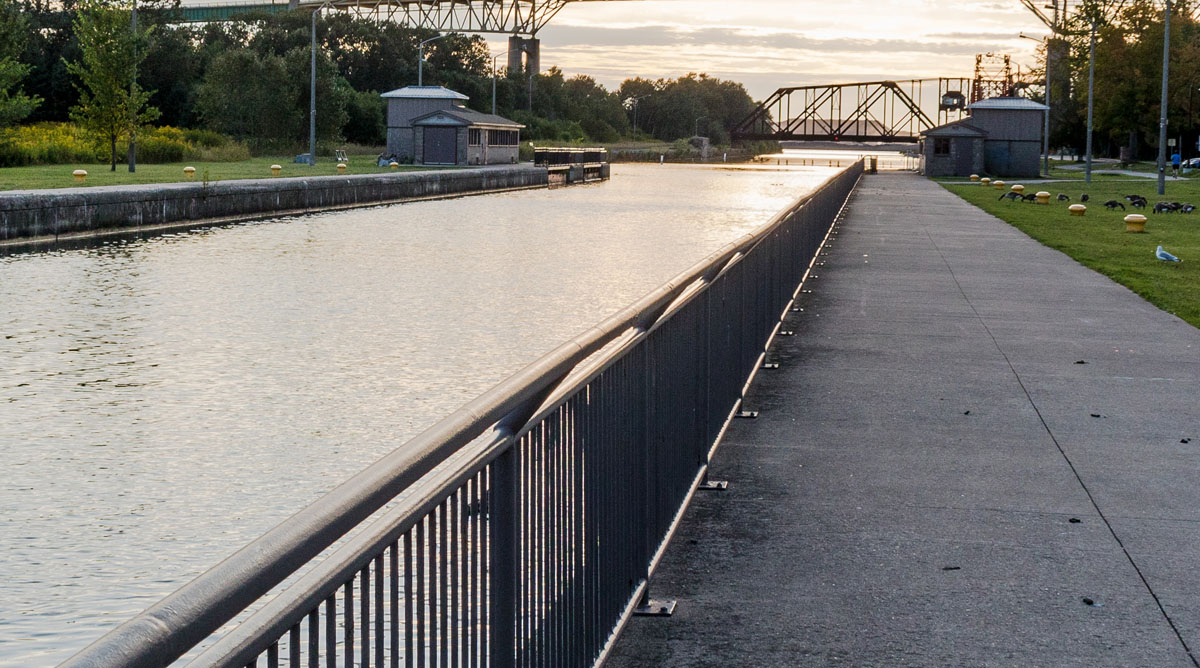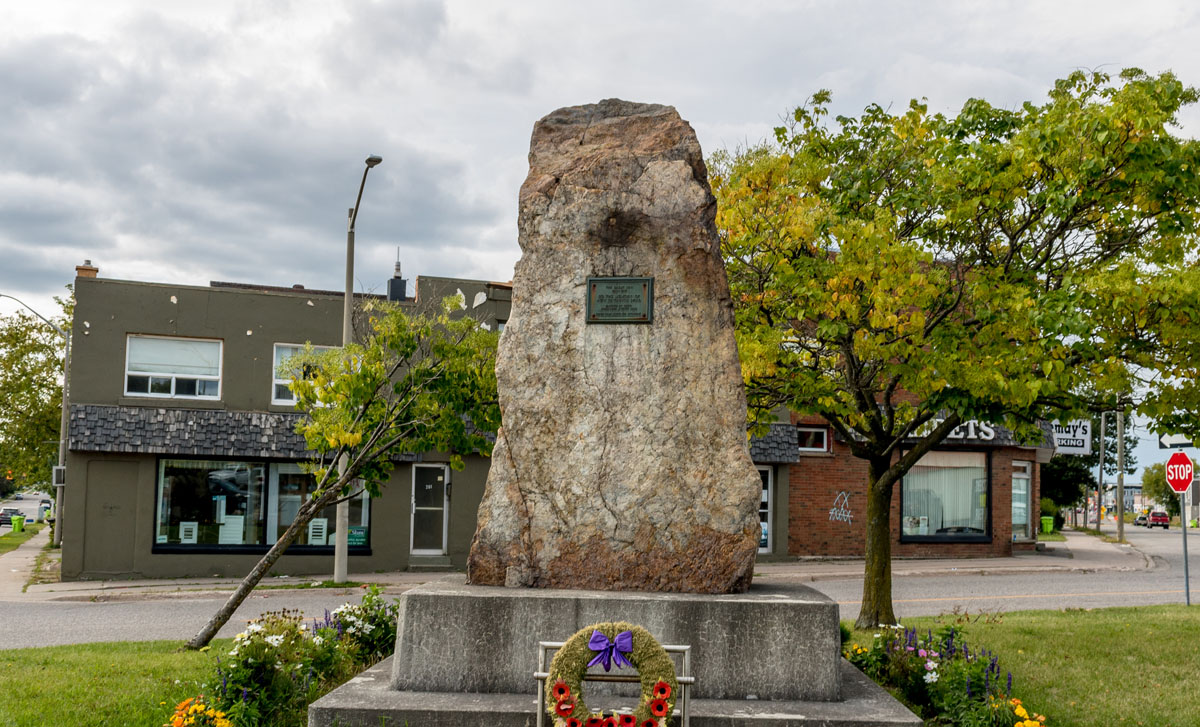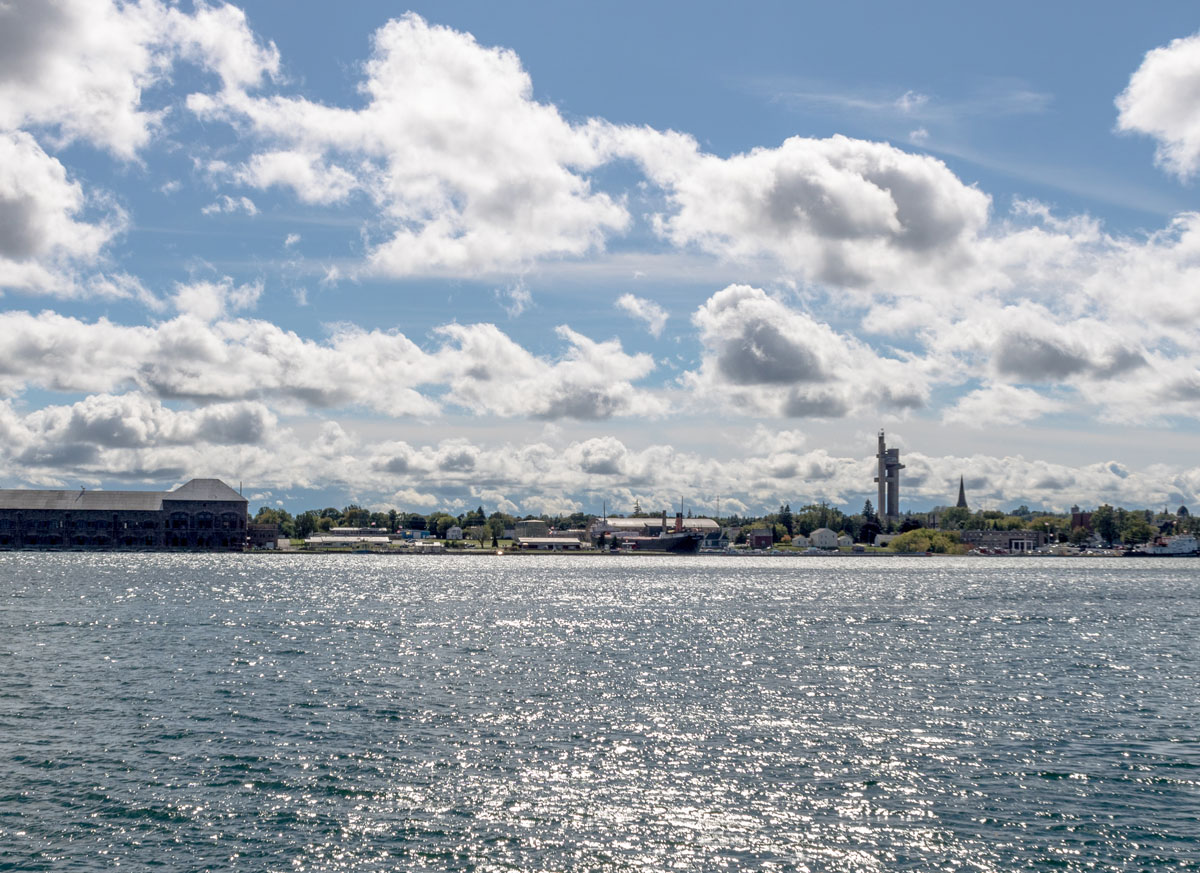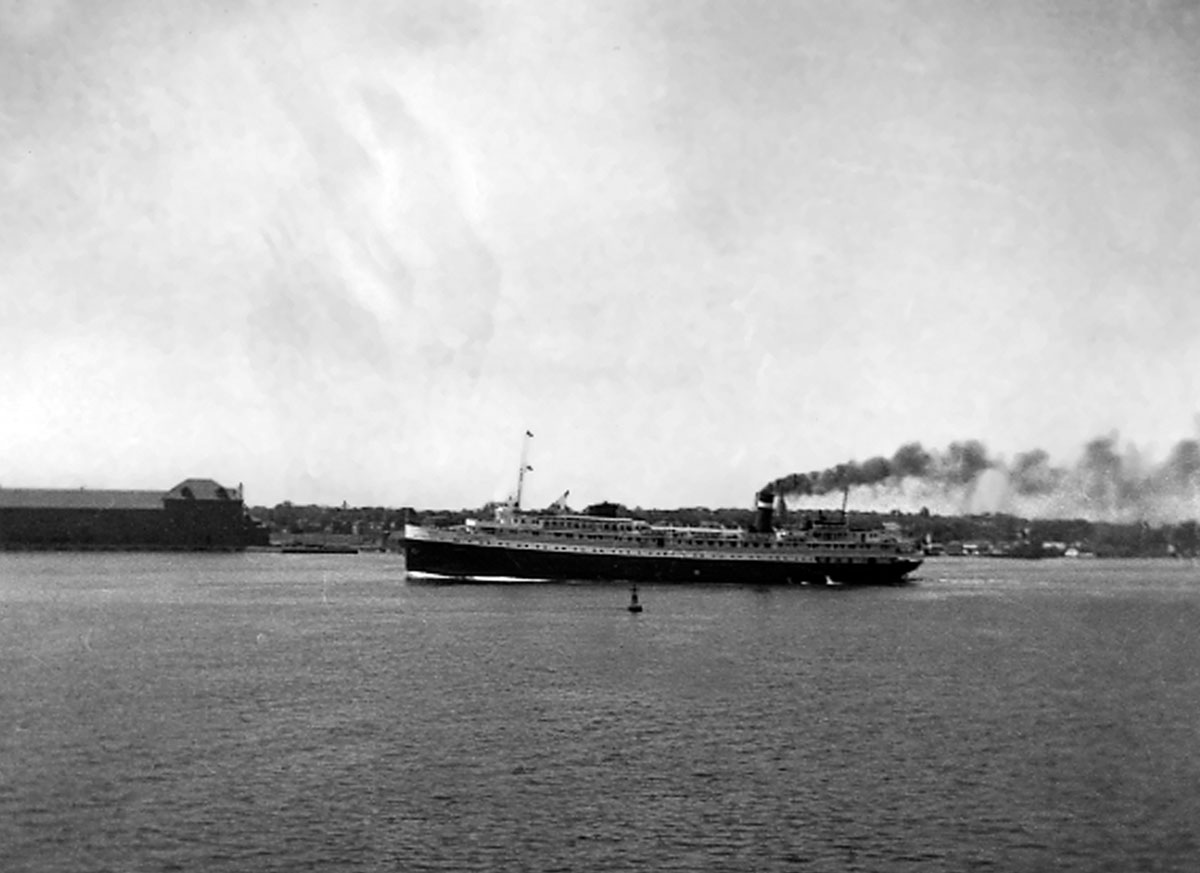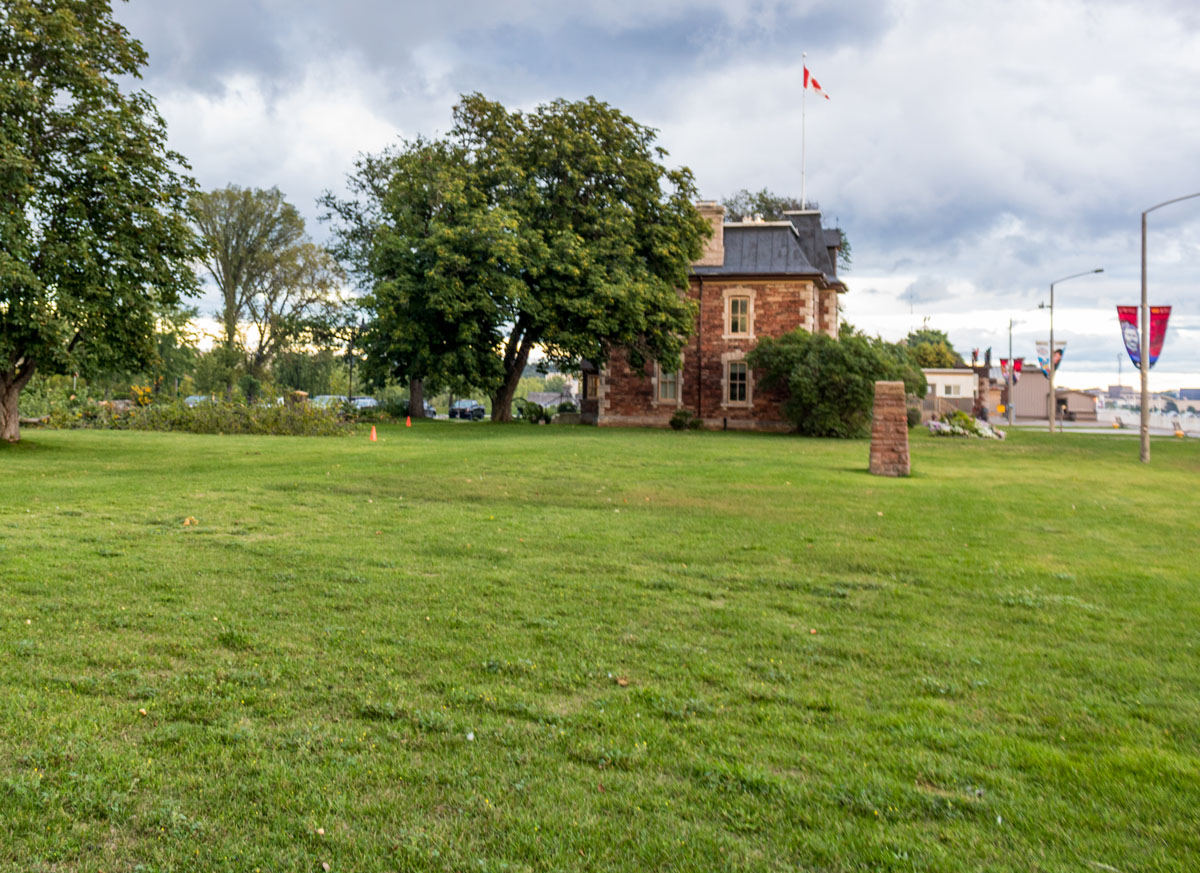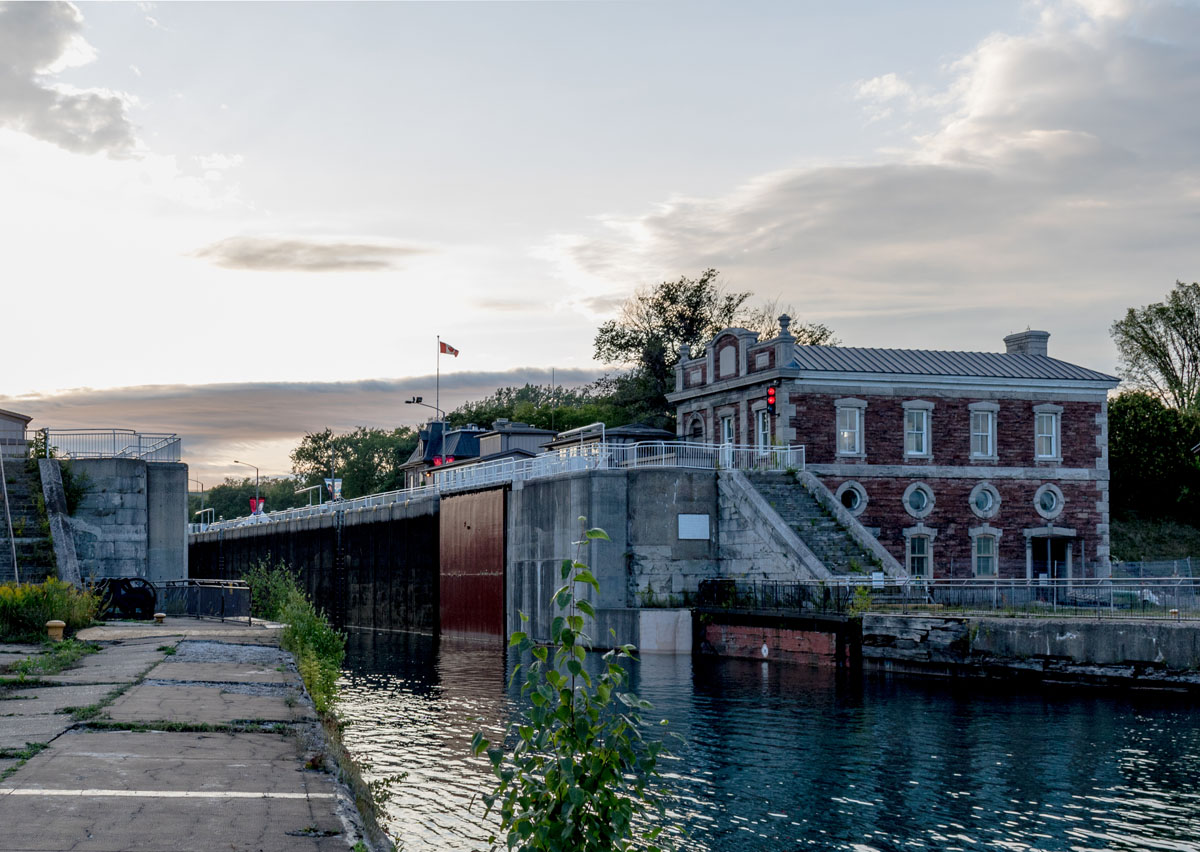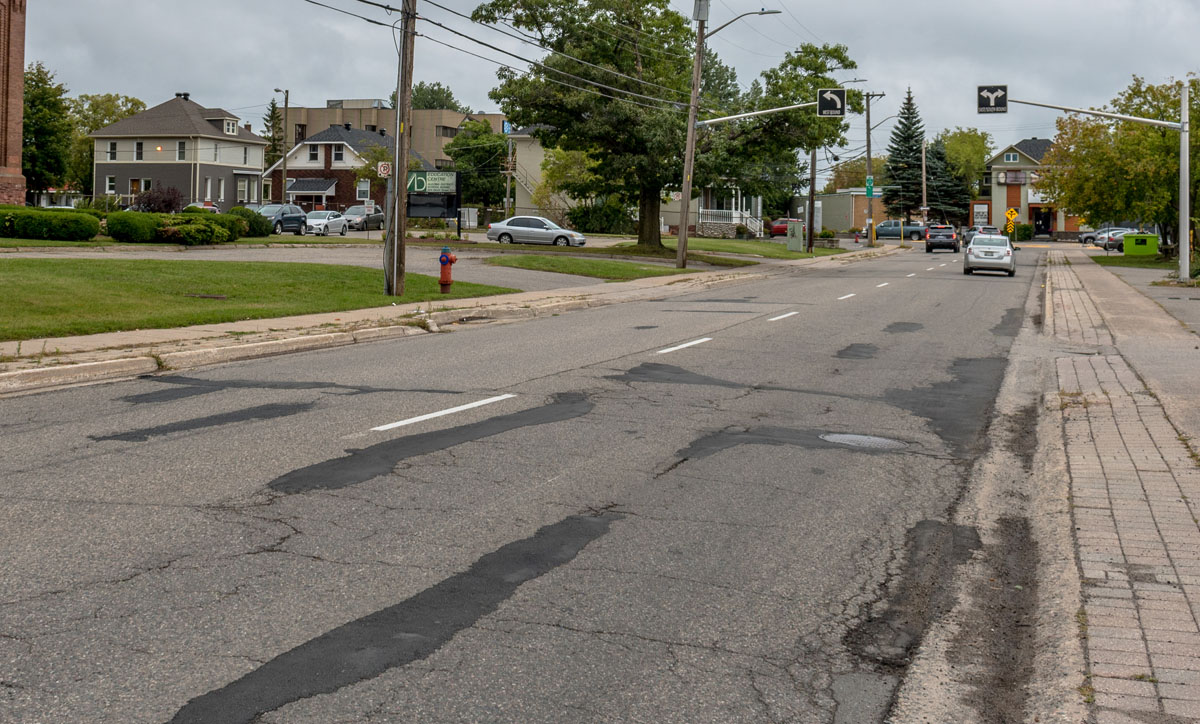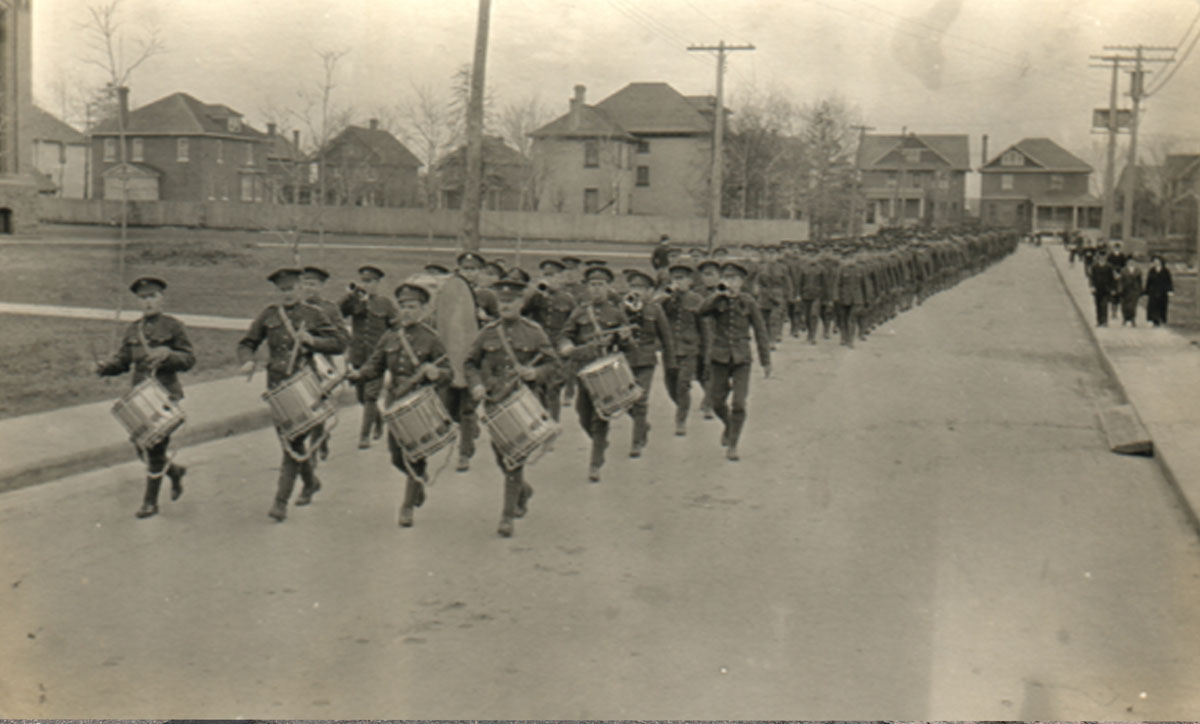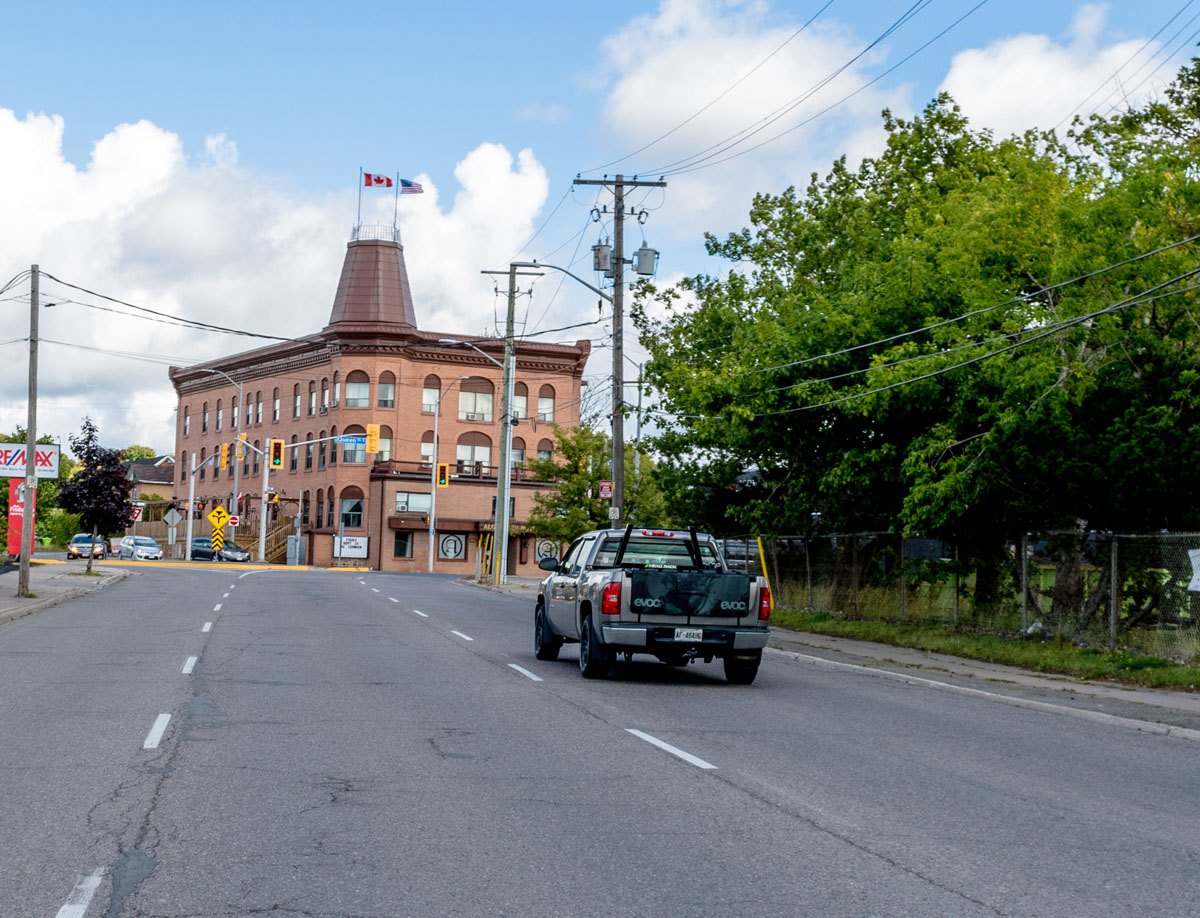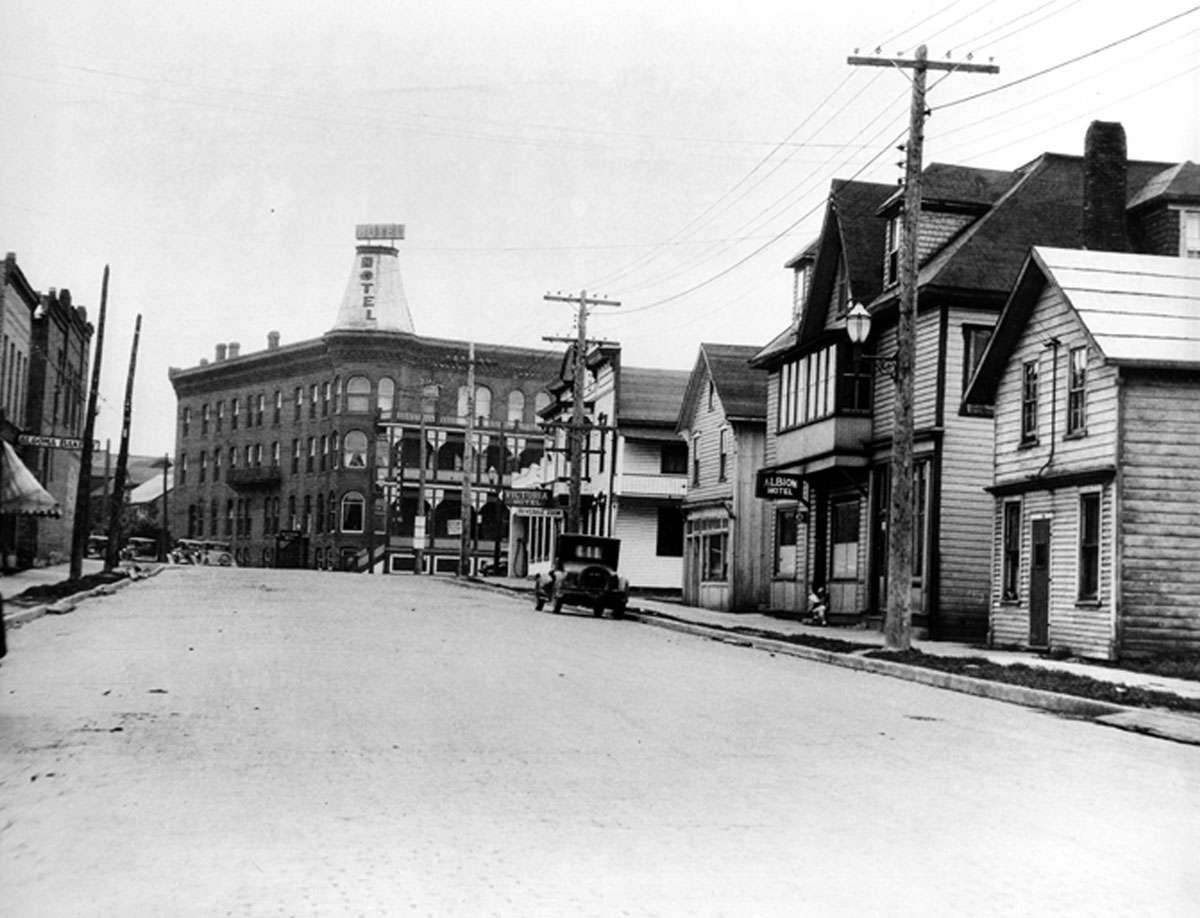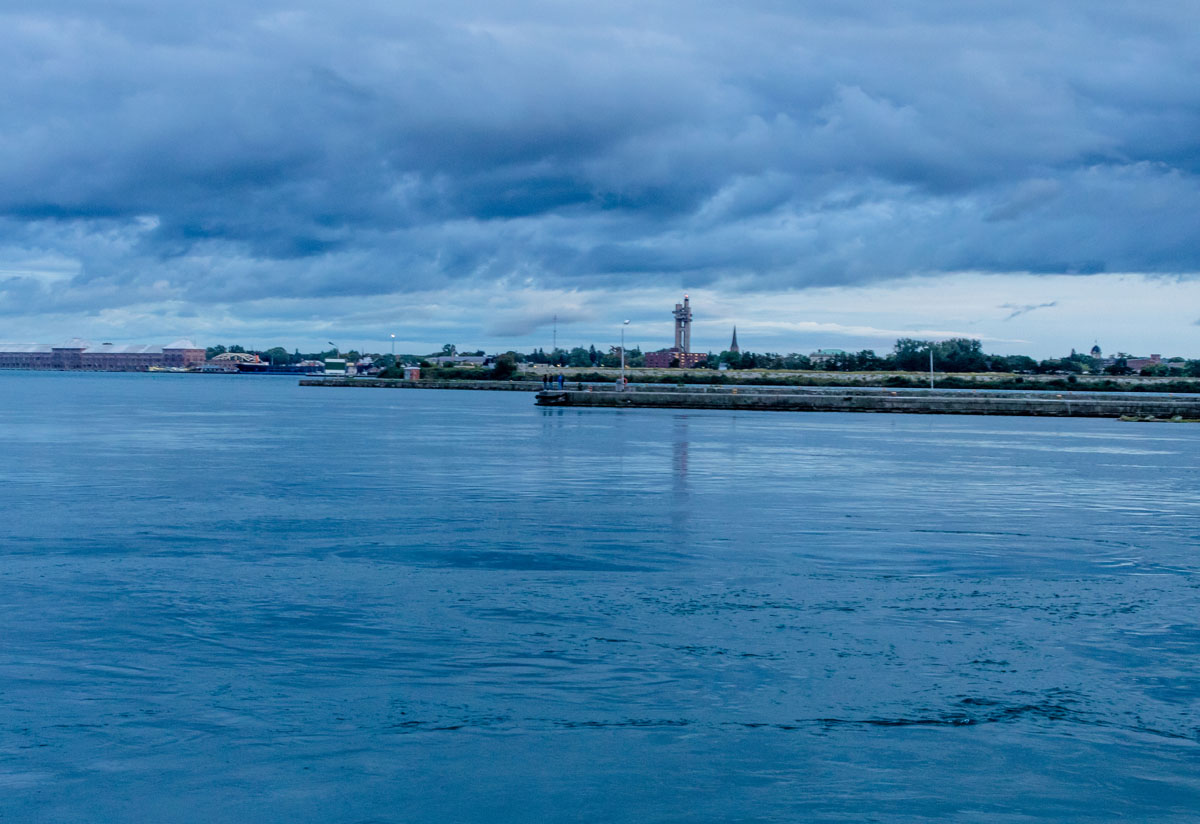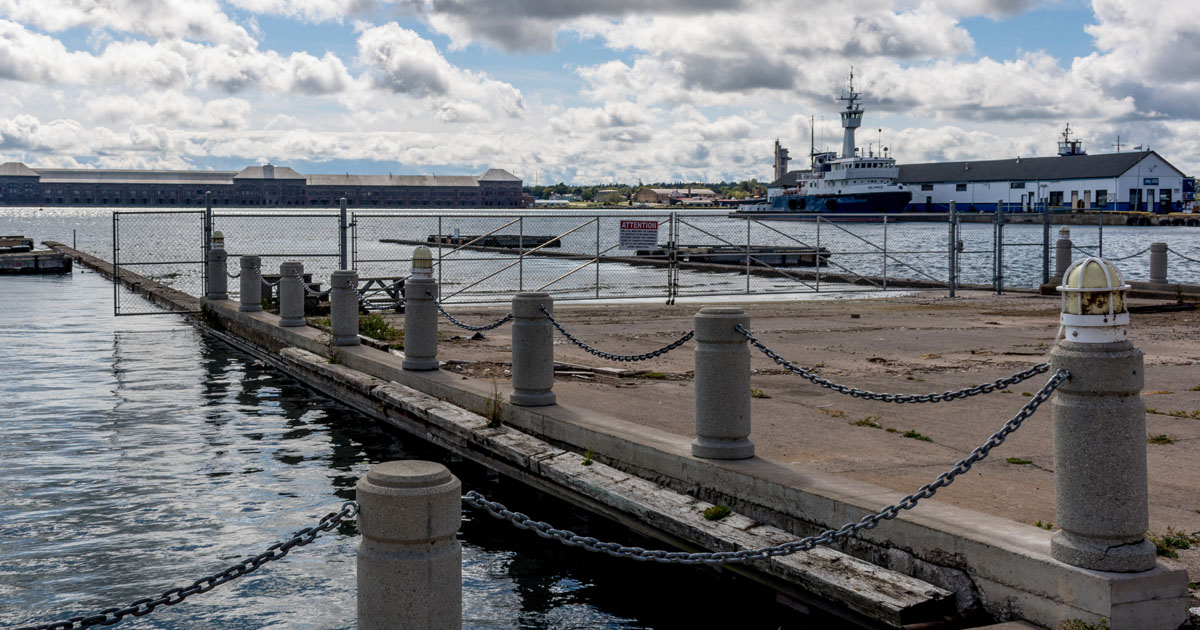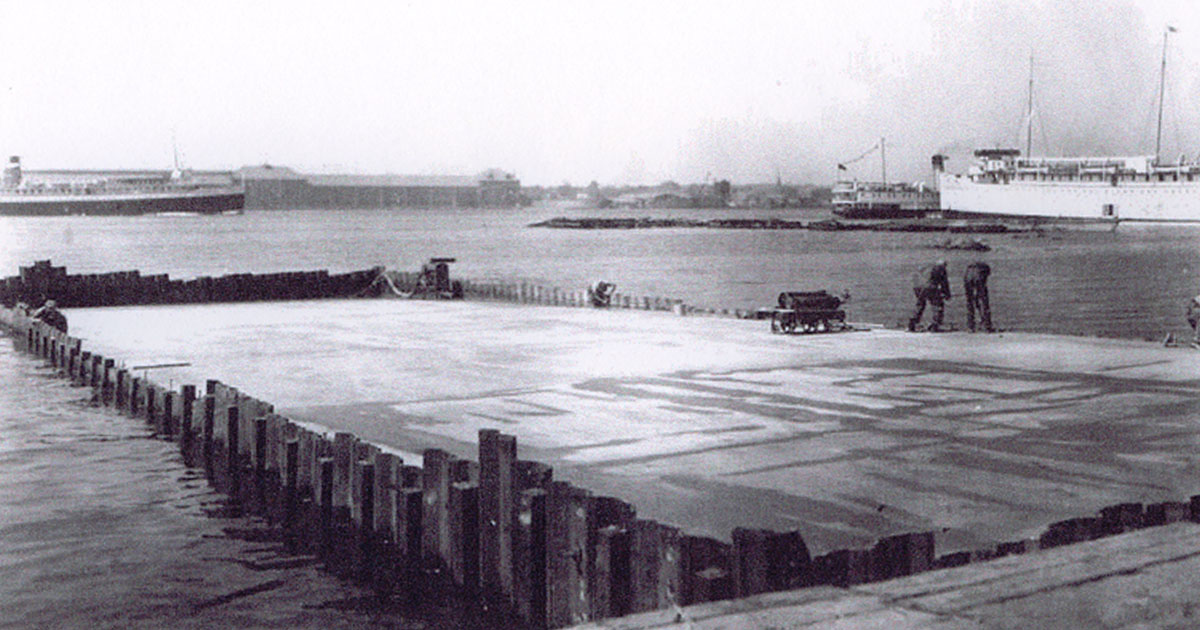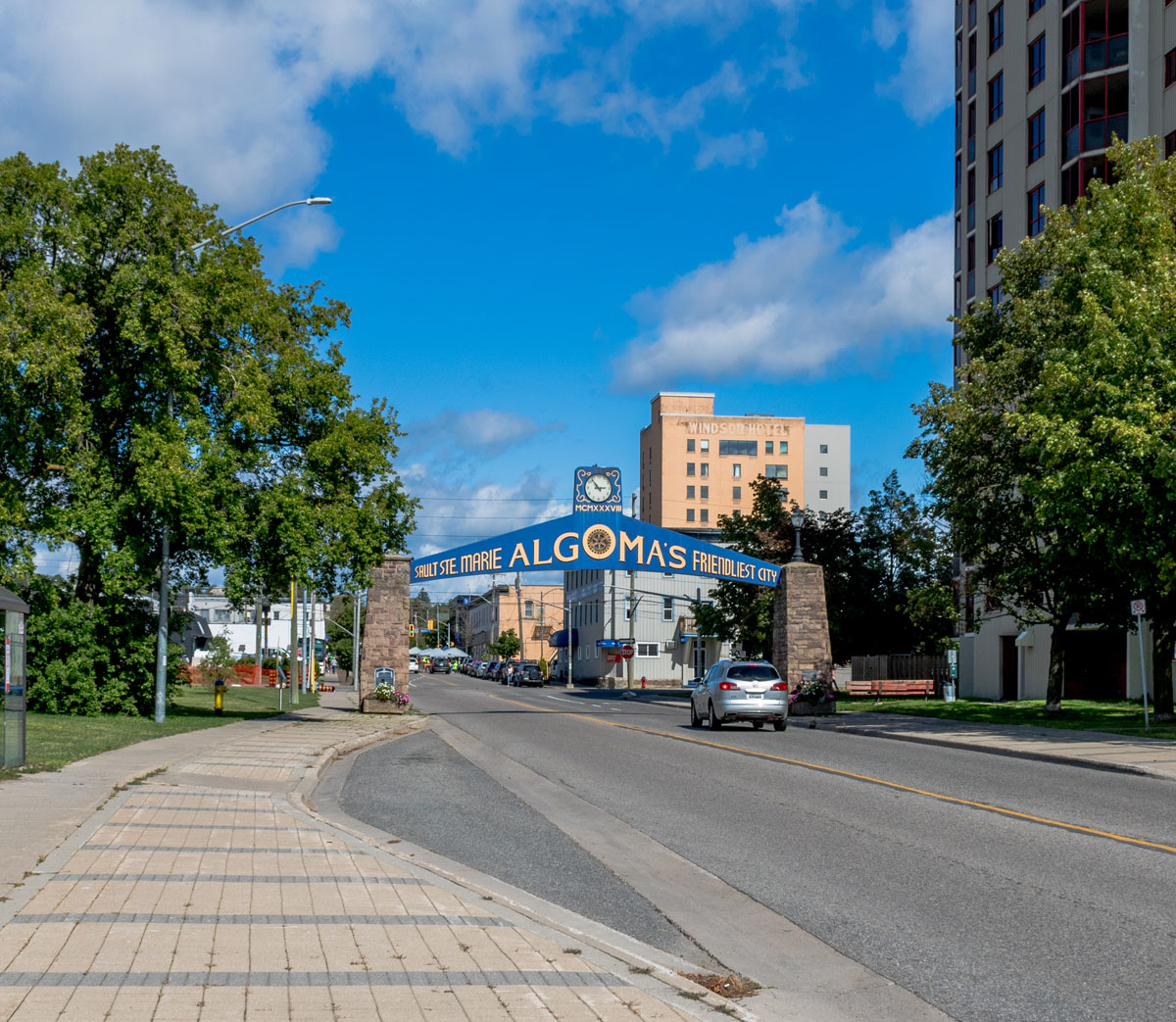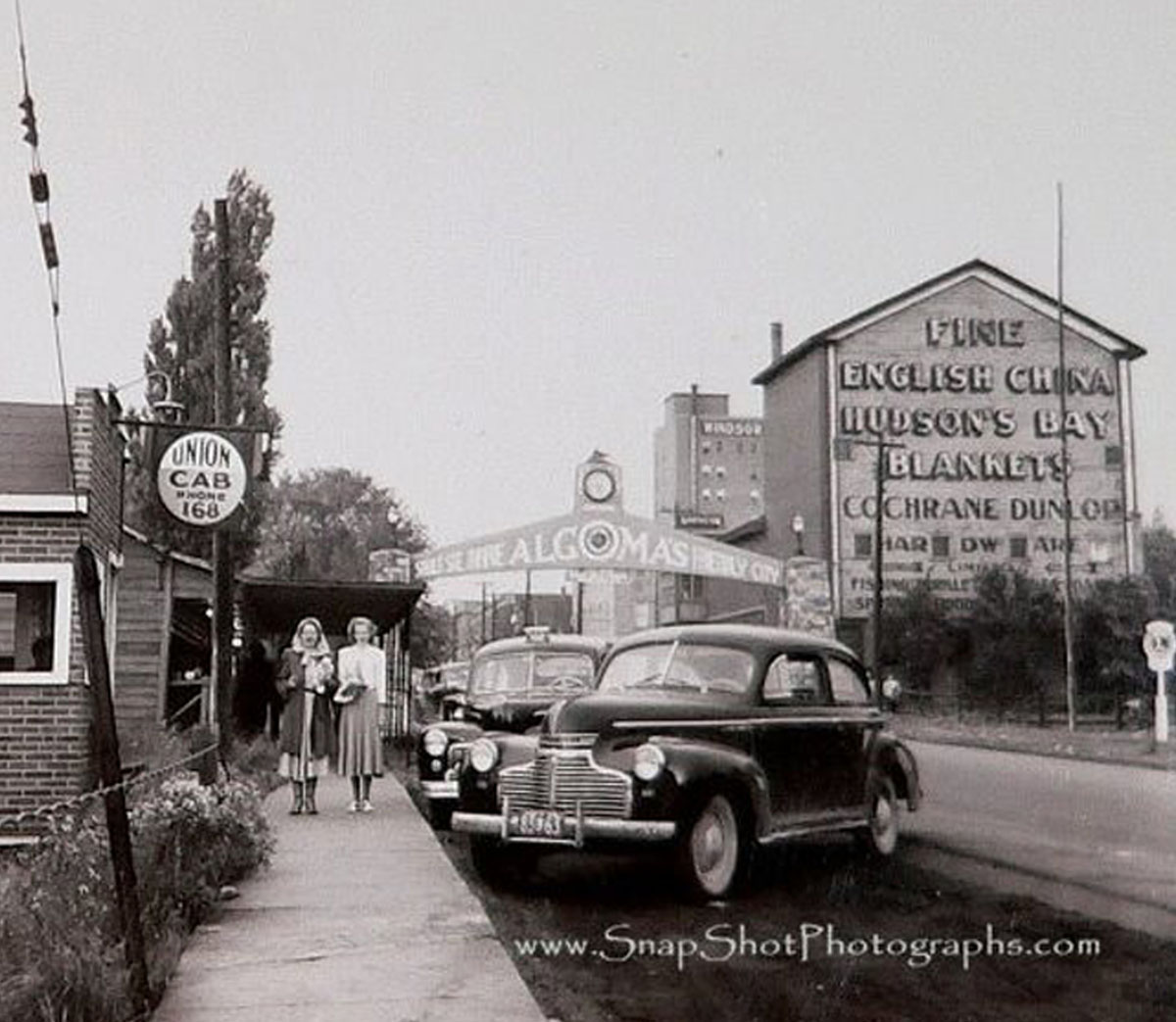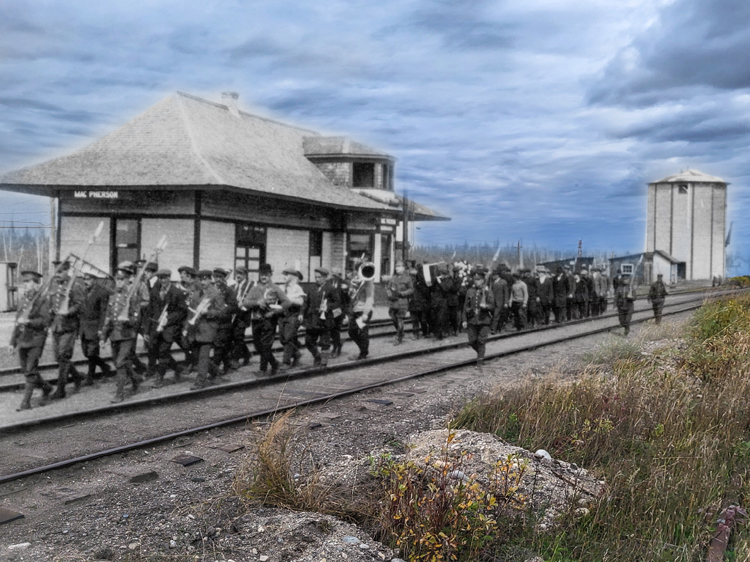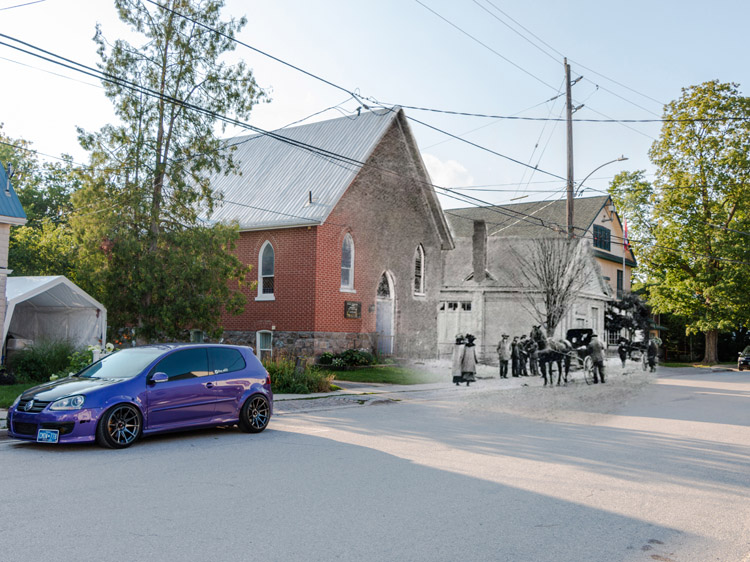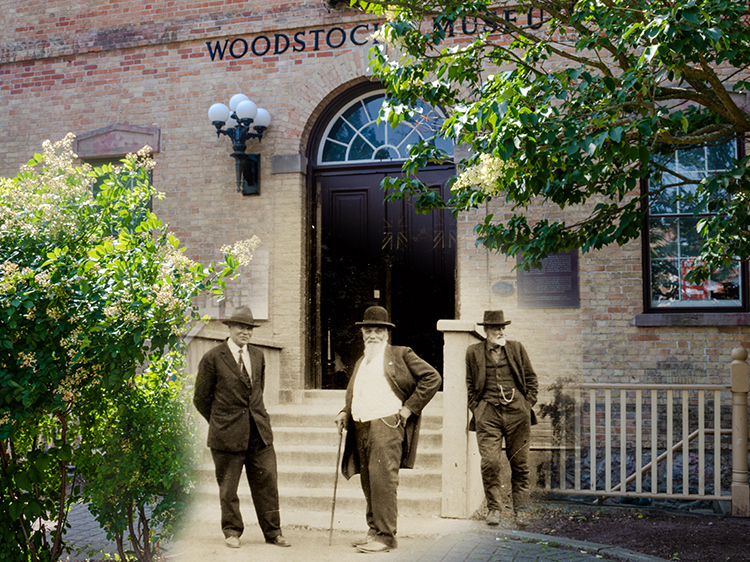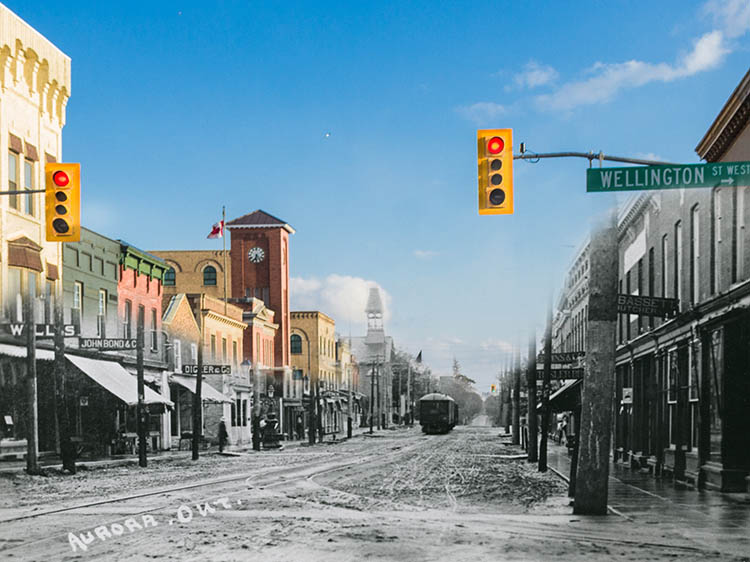Partner City
Sault Ste Marie
Dynamo on the Rapids
The rapids at the mouth of the Saint Mary's River have been the key factor in Sault Ste. Marie's history, and are in fact the reason the city is there at all. It's only fitting the city was named after them too: Sault is the 17th Century French word for 'rapids.' The place had for thousands of years been a place of great gatherings and bountiful fishing by First Nations peoples. The spot also had great strategic significance as the gateway to Lake Superior. French and later British fur traders set up a trading post here that continued until the 1860s. Near the end of the century, Soo, as its often called, was connected to the outside world with railways and canals, and the town became the site of great industrial enterprises that harvested the resources of northern Ontario's hinterland. Since then Sault Ste. Marie has grown steadily, and the downtown is reviving amongst the great stock of impressive historic buildings that survive.
This project is a partnership with the Sault Ste. Marie Downtown Association, the Sault Ste. Marie Museum, and Tourism Sault Ste. Marie.
We respectfully acknowledge that Sault Ste. Marie is on Robinson-Huron Treaty territory and is the traditional territory of the Anishnaabeg, specifically the Garden River and Batchewana First Nations, as well as Métis People.
Tours
Downtown Sault's Murals
Showcasing Local Talent
Waterfront Attractions
Walking Sault's Boardwalk
The Sault Rapids
Engine of Sault Ste. Marie
A Stroll Down Queen Street
The Rise of Sault Ste. Marie
Explore
Sault Ste Marie
Stories
Sault Ste. Marie Receiving Station
Story Location
During the First World War, Canada set up a network of 24 internment camps and receiving stations to process and imprison some 8,579 'enemy aliens' and prisoners of war. In Sault Ste. Marie, the federal building, which is now home to the Sault Ste. Marie Museum, became a receiving station for those immigrants from enemy countries. Between January 1915 and June 1918, some 43 enemy aliens were held here as they awaited transfer to other purpose-built internment stations, like the forced labour camp at Kapuskasing in northern Ontario.1 Some of those arrested locally were held in a small internment camp on nearby Whitefish Island, just opposite the locks of the Soo Canal.
By 1916 there were apparently 1,700 "enemy aliens" registered in Soo and required to report every week to the registrar. If they failed to report, or were found to be homeless or destitute when they did, they would be fined and, in some cases, interned at the Sault Ste Marie Receiving Station to await transfer to another internment camp.
* * *
Soo's Italians: Racism and Internment
For a city of its size, Sault Ste. Marie had a very large foreign population in 1914. Most were working class men who had come to the area to work in the region's burgeoning industries, especially the Algoma Steel Mill. They were paid abysmally low for the standards of the day: 17.5 cents an hour for a ten hour shift at the mill.3
In the early 1900s, the British-descended elites of Sault Ste. Marie looked upon this foreign population with distaste. A 1912 article in the Sault Daily Star complained about the estimated 4,500 "foreigners" living permanently in Sault, saying "It is a certainty the number is very high—too high for the good of the community."
The writer's complained of the slumlike conditions that persisted in the city's immigrant quarter, and the willingness of these people to work for cheaper wages, such that "Canadian labour could not compete with them."4
Another article claimed: "The general consensus… among the city officials… is that the Italians and Polacks are the worst in regard to sanitary conditions."5
They blamed this on the transient nature of the Italian immigrants, who apparently worked in Sault to earn money, and then returned to Italy. Whether the ruthless exploitation of these immigrants by their factory employers played some role in their poverty was not considered.
The situation of Italians in Sault Ste. Marie is an interesting one, in light of what was to happen when war broke out with Germany and Austria-Hungary.
Prior to the war Italy had been part of the Triple Alliance with those two powers, and it was expected Italy would soon join the Central Powers. Thus when the War Measures Act classified all immigrants from enemy nations as enemy aliens, Italian immigrants were also treated with suspicion—though not technically enemy aliens. The Canadian government began banning all money orders to Italy, which severely impacted the many Italians in Soo who were sending remittances home to their families.6
There were some Italians, too, who came from lands controlled by the Austro-Hungarian Empire. These Italians were considered enemy aliens, and during the war a number of them were arrested and interned.
The Italian government eventually decided to join the war on the Allied side in May 1915, after engaging in a hugely cynical bidding war with both sides of the conflict. Italy's joining the Allied cause helped improve the status of the Italians in the city somewhat.
During the war Canada's newspapers showed a barely concealed hatred for the Germans and Austro-Hungarians (primarily Ukrainians) who lived in Canada, and callously debated their post-war fate—whether or not all several hundred thousand of them should be deported en masse.
In Soo, however, it appears that the most bile was still reserved for Italians—even though Italy was an Allied power, and hundreds of Soo's Italians had fought and died in both the Canadian and Italian armies.
In 1918 one letter to the editor of the Daily Star complained that a recent editorial on "How to Deal with the Foreigner," focused on Italians, and "Nothing was said of the Austrians who live in the same locality and under the same conditions. The Italian was singled out for a lot of the most vituperative and unmerited abuse."7
The more or less open racism towards Italians continued after the war. During the 1920s a chapter of the KKK formed in Sault Ste. Marie and soon boasted 600 members. They focused their ire on Italian Catholics especially, burning crosses on Italians front yards, striking fear into the hearts of the city's Italians. One local, Dorothy Bonnell, remembers attending a family gathering during her childhood, and hurriedly being told by her family to shutter the windows, turn off the lights, and quiet down. A KKK procession had been spotted marching up the street.8
During the Second World War, when Italy did fight against the Allies, Canada sent up another system of internment camps, and many of Soo's Italians were interned. Most were sent to an internment camp at Petawawa, which had already served as an internment camp during the First World War.
2. "1,700 Aliens Must Report at Police Court Each Week," Sault Daily Star, June 27, 1916, https://www.internmentcanada.ca/articles/21/1916-06-27-SDS-1700-Aliens-Must-Report-at-Police-Court-Each-Week.pdf
3. Gerolamo Moroni, "The Italian Colony at Sault Ste. Marie" Upper County: A Journal of the Lake Superior Region, 11.
4. "The Sault's Foreign Problem The Worst in Canada," Sault Daily Star, December 14, 1912, https://www.internmentcanada.ca/articles/21/1912-12-14-SDS-The-Saults-Foreign-Problem-the-Worst-in-Canada.pdf
5. "Conditions Need Improvement in Foreign Quarter," Sault Daily Star, December 13, 1913, https://www.internmentcanada.ca/articles/21/1912-12-13-SDS-Conditions-Need-Improvement-in-Foreign-Quarter.pdf
6. Remittances
7. "The Foreign Question," Sault Daily Star, August 8, 1918, https://www.internmentcanada.ca/articles/21/1918-08-08-SDS-The-Foreign-Question.pdf.
8. "Remember This? The Sault's history of cross burnings and fear," Sootoday.com, 26 June 2016, https://www.sootoday.com/columns/remember-this/remember-this-the-saults-history-of-cross-burnings-and-fear-325258
Then and Now Photos
Militia at the Canal
Sault Ste. Marie Museum X2009.2.42
1903
A grainy photo taken showing the camp of the militia troops who came to Sault Ste. Marie to quell rioting by unpaid employees of Francis Clergue's insolvent business empire.
Soldiers Ending the 1903 Riot
Sault Ste. Marie Museum 2000.66.5a
1903
In the 1903 riot soldiers were brought in from Toronto to quell workers uprisings.
Commerce Bank Burns
Sault Ste. Marie Museum X978.16.31
1906
A crowd of people stnad around in the frigid temperatures watching as firefighters attempt to put out a fire in the Commerce Bank. On this occasion they appear to have been successful, as the building is still there (albeit in heavily renovated form).
The 1909 Locks Collision
Sault Ste. Marie Museum 994.84.8
1909
In 1909, a steamer approached the locks too quickly and rear ended another steamer, leading to a water overflow. The damage would close the locks until repairs could be completed.
Gore St. War Memorial
Sault Ste. Marie Museum 2008.60.19
1923
A large uncut boulder of Algoma rock was erected here in 1923 as a memorial to the men from northern Ontario who fell in the First World War.
Steaming Past Michigan
Sault Ste. Marie Museum 991.26.41
1944
A passenger steamer under full steam heads towards Lake Huron. Behind it you can see the American Sault Ste. Marie, including at the left part of the large electric hydropower facility the Americans had built in the 1890s. It was one of the first such facilities in the world.
A Man and His Son in 1907
Sault Ste. Marie Museum 992.4.20
c. 1907
Taking a drive in Sault Ste Marie in 1907 could have occured one of two ways. Ford cars had been rolled out some three years earlier, but a horse and carriage was still the primary form of transportation.
Postcard of a Steamer
Sault Ste. Marie Museum 992.2.5
c. 1910
A passenger steamer exits the locks heading towards Lake Huron. Notice the crowd of onlookers on the deck, marvelling at the canal. Passenger cruises were, and remain, hugely popular on the Great Lakes, and any of them that hope to get to Lake Superior have to go through Sault Ste. Marie, bringing a steady influx of tourists through the ice-free months.
Soldiers Preparing to Ship Out in 1914
Sault Ste. Marie Museum X982.12.4
c. 1914
Within two weeks of Britain declaring war on Germany on August 4th 1914, the first overseas contigencies left Sault Ste Marie.
Houses on Pim
Sault Ste. Marie Museum 2005.16.1c
c. 1920
You can see here a number of homes on Pim Street that have not survived, along with the Algonquin Hotel at the end of the block dominating the view. The Algonquin survives to this day, and is discussed in our Queen Street tour.
An Early Seaplane
Sault Ste. Marie Museum X978.16.79h
c. 1920s
A sepalane comes into dock near the canals. Given northern Ontario's numerous lakes, rugged terrain, lack of roads and airstrips, seaplanes were an obvious choice for moving around rapidly. Sault Ste. Marie became an important hub for seaplane activity, and it's no coincidence the Canadian Bushplane Heritage Centre is located just a short distance east of this spot.
Seaplane Dock
Sault Ste. Marie Museum X2000.5.28
c. 1939
This dock was once part of the Air Service Centre at Sault Ste Marie, where much of northern Ontario's aerial firefighting aircraft and bush planes operated out of.
Union Cab Depot
Sault Ste. Marie Museum X2014.1.2
c. 1940
Two women pose for a photo outside the Union Cab Depot that was once located at this spot on Foster Drive. Behind them you can see above them the famous Algoma's Friendliest City sign which survives today.


